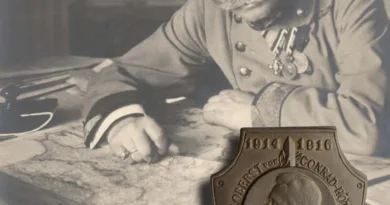Karl and Zita
Emperor Karl and his wife Zita were very popular in Hungary. Hungarians did not forget the 1848/49 events. Neither did so Emperor Franz Joseph, who decorated his bedroom with the painting of the victorious for him and disasterous for the Hungarian revolution Temesvár battle in August 1849. Thus, he was not really popular despite of the fact that Austria-Hungary was a flourishing country, especially after the 1867 agreement of the Kaiser and the Hungarian politicians (the Ausgleich). In fact, Hungarians, who had to digest the loss of independence tended to love and respect Fraz Joseph’s wife instead of him. Sissy was very popular in Hungary. In another post I will show some further badges showing her. Nevertheless, after the death of the old Kaiser, when Karl became the ruler he soon became popular in Hungary.
The first officially tolerated Kappenabzeichen were the ones decorated with the portrait of Emperor Franz Joseph and chief army commander Archduke Friedrich. These badges were produced already in 1914, together with the 1914 Christmas badge of the 1st Army (also decoated by the same portrait). Other cap badges were not allowed, however, they became so popular that most of the commanders on the field not just tolerated them but even designed and ordered new badges to stimulate soldiers. When Karl became emperor his portrait and Zita’s portrait were also depicted on similar Kappenabzeichen than the previous emperor’s. The two badges on this picture are lacquered. The more common pieces had no yellow coating.




